
Honda Civic Hatchback (2006-2011) engines, drive and performance
.jpg)
Honda Civic petrol performance
The 1.8-litre i-VTEC engine made its debut in the Civic and was a remarkable unit, delivering high performance for its size with the fuel consumption of a much smaller engine. It can sprint from 0-62mph in 8.9 seconds and is a lovely to exploit as it revs freely but remains refined even when pushed hard. The other petrol is a 1.4-litre i-DSI with 83bhp but this is only available in five-door entry-level SE trim.
All Civics came with a six-speed gearbox while the two petrol engines can be specified with an automatic gearbox called i-SHIFT. It has both semi and fully automatic modes and carries a £700 premium. Switching between automatic and manual is straightforward, and once in the manual set-up, paddles mounted on the steering wheel control up and downshifts.
The only diesel was the quiet and refined 2.2-litre i-CTDi which was one of the best diesel engines around at the time. The all-aluminium unit delivers power smoothly and predictably which makes it easy and relaxing to drive in traffic and hushed on the motorway.
Honda Civic Type-R performance
Honda has carried over the 2.0-litre engine from Civic Type R (EP3) with a few tweaks to make it a little smoother and more responsive – as a result it now has 200hp. The power delivery was smoother but while the engine was improved it still needed to be worked hard to get the most out of it, as it did without the turbocharged boost that most rivals boasted.
It also lacked pulling power so you’ll often find yourself changing to a lower gear in order to keep up with traffic, which can be tiring on motorways. But thanks to a low kerbweight it’s quick from 0-62mph, completing the sprint in just 6.6 seconds which is faster than the Volkswagen Golf GTi and more powerful Ford Focus ST.
If you’re on a back road blast the Civic Type-R is also immense fun and the short-shifting and precise six-speed manual gearbox makes it easy to keep the engine at higher revs allowing you to access its power.
Agile and surefooted, the Civic corners with confidence and the precise steering provides good feedback. It may not quite be as involving as the Ford Focus but it still boasts minimal body roll and an eager nature through corners. On twisting roads it feels stable and the firm brakes provide excellent stopping power while the gearshift has a sporty short throw.
The three-door Type-S model has lower suspension making it more focussed, although the ride is noticeably firmer as a result – however both cars are involving and enjoyable to drive. The ride on the motorway is impressively composed, but the suspension often transmits shocks from potholes into the cabin.
How does the Honda Civic Type-R handle?
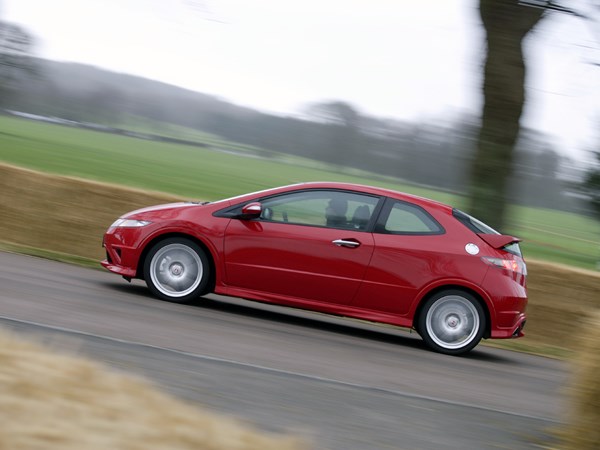
The Type R’s suspension is based on that of the standard Civic, but it is lower and has a wider stance at the rear. The car feels well balanced when pressing on but the ride is firm and it struggles over bumpy and rough road surfaces. However the steering is responsive and the Type-R changes direction nicely while the strong brakes add to the surefooted feel.
There’s almost endless levels of grip too and with virtually no body roll and a stiff bodyshell it feels every inch the hardcore hot hatch. It’s not only enjoyable to drive but incredibly involving, the problem is that the Civic is also pretty uncompromising so while it’s a great at being a performance car, it struggles in terms of comfort. It’s rarely a relaxing car to drive.


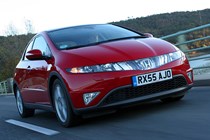
.jpg)

.jpg)
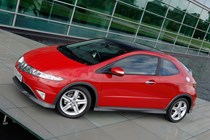

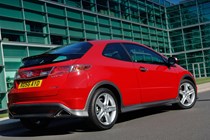

.jpg)
.jpg)
.jpg)
.jpg)
.jpg)
.jpg)
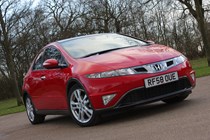
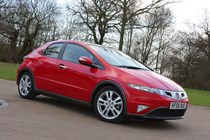
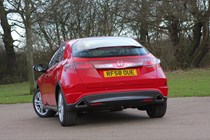
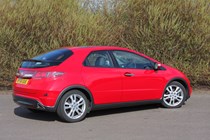
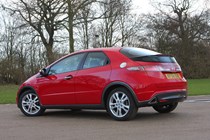
.jpg)
.jpg)
.jpg)
.jpg)
.jpg)

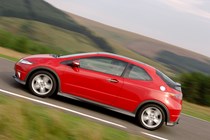
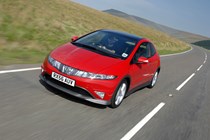
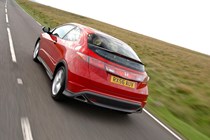
.jpg)
.jpg)
.jpg)
.jpg)
.jpg)
.jpg)
.jpg)
.jpg)
.jpg)
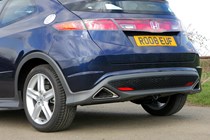
.jpg)
.jpg)
.jpg)
.jpg)
.jpg)
.jpg)
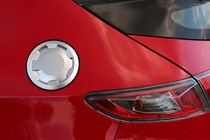
.jpg)
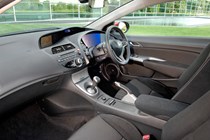
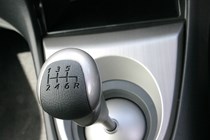
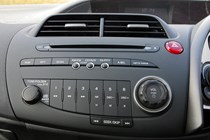
.jpg)
.jpg)
.jpg)
.jpg)
.jpg)
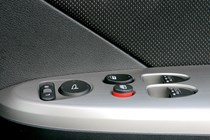


.jpg)
.jpg)
.jpg)
.jpg)
.jpg)
.jpg)
.jpg)
.jpg)
.jpg)
.jpg)
.jpg)
.jpg)
.jpg)
.jpg)
.jpg)
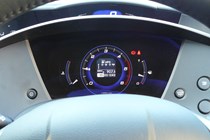
.jpg)
.jpg)
.jpg)
.jpg)
.jpg)
.jpg)
.jpg)
.jpg)
.jpg)
.jpg)
.jpg)
.jpg)

.jpg?quality=50)

.jpg?quality=50)




.jpg?quality=50)
.jpg?quality=50)
.jpg?quality=50)
.jpg?quality=50)
.jpg?quality=50)
.jpg?quality=50)





.jpg?quality=50)
.jpg?quality=50)
.jpg?quality=50)
.jpg?quality=50)
.jpg?quality=50)




.jpg?quality=50)
.jpg?quality=50)
.jpg?quality=50)
.jpg?quality=50)
.jpg?quality=50)
.jpg?quality=50)
.jpg?quality=50)
.jpg?quality=50)
.jpg?quality=50)

.jpg?quality=50)
.jpg?quality=50)
.jpg?quality=50)
.jpg?quality=50)
.jpg?quality=50)
.jpg?quality=50)

.jpg?quality=50)



.jpg?quality=50)
.jpg?quality=50)
.jpg?quality=50)
.jpg?quality=50)
.jpg?quality=50)



.jpg?quality=50)
.jpg?quality=50)
.jpg?quality=50)
.jpg?quality=50)
.jpg?quality=50)
.jpg?quality=50)
.jpg?quality=50)
.jpg?quality=50)
.jpg?quality=50)
.jpg?quality=50)
.jpg?quality=50)
.jpg?quality=50)
.jpg?quality=50)
.jpg?quality=50)
.jpg?quality=50)

.jpg?quality=50)
.jpg?quality=50)
.jpg?quality=50)
.jpg?quality=50)
.jpg?quality=50)
.jpg?quality=50)
.jpg?quality=50)
.jpg?quality=50)
.jpg?quality=50)
.jpg?quality=50)
.jpg?quality=50)
.jpg?quality=50)